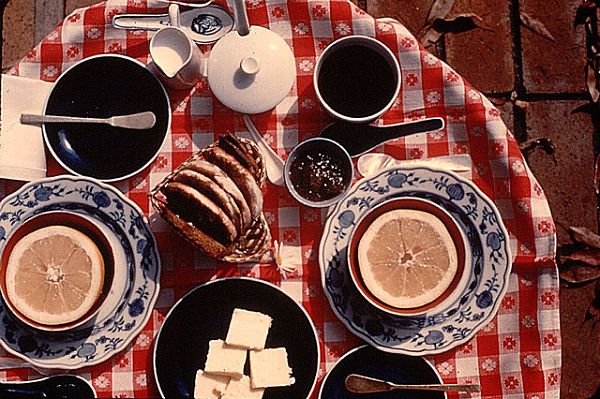Goddess of Small Things

Image from the Eames Collection at the Library of Congress © Eames Office
Originally in print in Ideas Spring 2024.
For Ray Eames, hosting meant transforming the everyday into a performance.
Architecture critic Esther McCoy wrote, in a posthumous tribute to Ray Eames, that the Eames House “was a framework for the display of rich objects.… a showcase for what Robert Venturi called ‘the good Victorian clutter.’” Ray seemed to accumulate clutter like breathing. Her small chamber at the Eames Office held wrapped gifts too pretty to open. The drawers and walls and shelves at the Eames House held collections of combs, kites, Japanese lanterns, Mexican pinatas, many of which would later turn up as decoration for Herman Miller showrooms, or illustrate the House of Cards.
Without movement and change, clutter can become inert, stationary, old. Ray’s practice of entertaining kept it fresh, resetting the stage for an evening as if for a play. “Before the arrival of friends for an ‘informal’ evening at home, Ray, like a stage manager, art director, or production designer, would oversee a small Eames Office team assigned to preparing the house for the coming performance of hospitality,” writes historian Pat Kirkham.
Catered food would be arranged on their own dishes, which included Japanese pottery and Dutch porcelain. Woven baskets, tablecloths, and napkins brought texture, fresh flowers and candles (burned down to specific lengths), more color. Sometimes visitors were greeted by their hosts in masks, adding to the aura of performance. Guests ran the gamut from business execs to Cranbrook classmates, from registered architects to artistic nuns. Sometimes the subcultures mixed: Charlie Chaplin was on the list for an elaborate tea ceremony held in honor of sculptor Isamu Noguchi and his then-fiancée, actress Shirley Yamaguchi. Guests knelt on tatami, but lifted their tea bowls from Eames wire base tables. Even this Japanese-inspired event was an opportunity to display the flexibility of their designs, and the usefulness of tiny, beautiful things.
On X
Follow @LangeAlexandraOn Instagram
Featured articles
CityLab
New York Times
New Angle: Voice
Getting Curious with Jonathan Van Ness